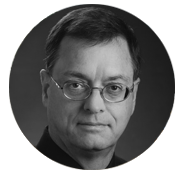Board: West Virginia Board of Architects (WVBA)
Credit Hours: 2.00
Approval Number: J607LGL31
Add to Basket
Course Description
Welcome to the course ADA Paths – Community and Recreation. This is part 3 of a 3-part series discussing the creation of the standards and their applicability as regulations. This course then focuses on the regulations covering communication features to accommodate the disabled, considerations of surface finishes that make the use of space safer with mobility aids and recreational facilities that provide equal access to enjoyable pursuits.
Course Objectives
Upon successful completion of this course, the participant will be able to:
- Describe features and functions of alarm and notification systems in facilities designed to be accessible and usable by disabled occupants of all descriptions.
- Identify characteristics and defining features of visual, Braille, pictograms and tactile characters, ensuring that signage in accessible locations is legible to, and usable for, all occupants
- Discuss flooring surfaces and finishes, including allowable changes in level, to ensure smooth passage over them
- Recognize features of various facilities designed for recreation, so as to make continued enjoyment possible for the disabled
Instructor Bio
 Paul Spite, BS, BA
Paul Spite, BS, BA
AFD Consulting, Founder and Principal
Paul is a Registered Architect with over forty years of experience, a course developer and has been a teacher in multiple venues in the past. He is also a writer in many venues, having developed many studies, a few published articles, numerous short stories, multiple screenplays, two non-fiction manuals for church design and one novel. More to the focus of this endeavor, Paul has also created presentations for twenty-six lunch and learn presentations for building material manufacturers, webinars covering the subjects of Aging-in-Place and Architectural Acoustics and eleven distance learning courses for architects, engineers and contractors. As he nears retirement from managing his small architectural practice, Paul hopes to focus even more of his energy on teaching and on course development.


